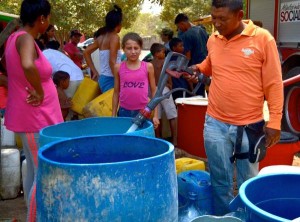By URIEL J. GARCIA
Cronkite News Service
WASHINGTON – Arizona had the nation’s highest number of people in default on their federal student loans in fiscal 2009, according to the latest figures from the U.S. Department of Education.
The “cohort default rate” statistics, released Monday, showed that 44,216 of the 276,057 student borrowers credited to Arizona were in default. The 16 percent default rate for the state was almost twice the national rate of 8.8 percent.
Department officials said one reason for the unusually high numbers in Arizona could be the presence of for-profit colleges like the University of Phoenix. The school is based in the state but has students all over the country.
“What makes the state of Arizona unique is that it’s the home of the University of Phoenix,” said the Education Deputy Undersecretary James Kvaal, in a phone conference to discuss the new numbers.
The report showed that for-profit colleges had the highest borrower default rate at 15 percent in fiscal 2009, compared to 7.2 percent for public institutions and 4.6 percent for private schools.
But a spokesman for the University of Phoenix blamed the economy for the spike, saying “colleges and universities throughout the country saw an increase in default rates, as many working Americans were finding it increasingly difficult to make ends meet.”
“As always, we are committed to helping our students understand and manage financial aid debt levels, and we continue to make significant investments in technology, learning and preparation to help our students succeed,” said the prepared statement from Chad Christian.
The Association of Private Sector Colleges and Universities, a membership group representing proprietary schools nationwide, said in a statement that it was “disappointed” to see default rates had gone up. It also pointed to the economy.
“We believe that the default rates will go down when the economy improves and the unemployment rate drops,” said the statement by Brian Moran, the association’s interim CEO.
“APSCU will continue working with its member schools to curb defaults and to assure that borrowers are getting all the information they need to manage their debts responsibly,” his statement said.
Kvaal agreed that a bad economy and high unemployment rates are likely one reason why the numbers have increased.
“We do think that the economy is a big factor in the growth in these student-loan default rates,” he said. “Another trend worth highlighting is the growth in for-profit colleges.”
The number of loans in default has increased steadily in all categories in recent years.
The overall default rate rose from 7 percent in fiscal 2008 to 8.8 percent in fiscal 2009.
The rate for public schools rose from 6 percent to 7.2 percent, while private institutions inched up from 4 to 4.6 percent. For-profit, or proprietary, schools saw the sharpest increase, climbing from 11.6 percent to 15 percent.
The actual number of students in default also grew. In fiscal 2007 there were 3.3 million students who had loans due and 225,371 in default. By fiscal 2009, those numbers had risen to 3.6 million students, 320,194 of whom were in default.
The rate is based on the percentage of loans in a given year that are more than 270 days past due.
The department releases the numbers every year as a guide to prospective students and to deny continued funding to schools that exceed certain default rates. The department targeted five schools for potential sanctions this year, four of which were for-profit and none of which were in Arizona.




